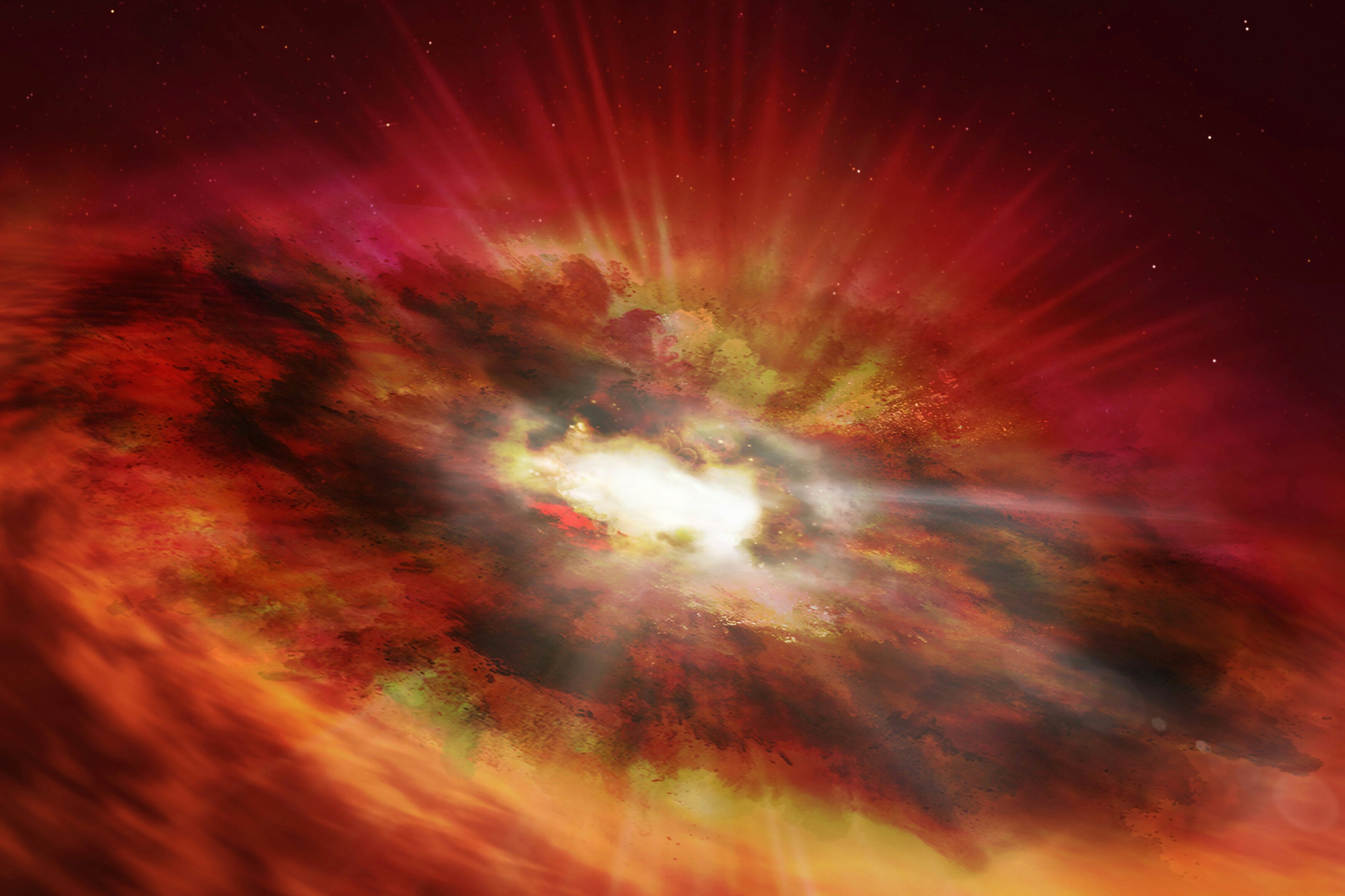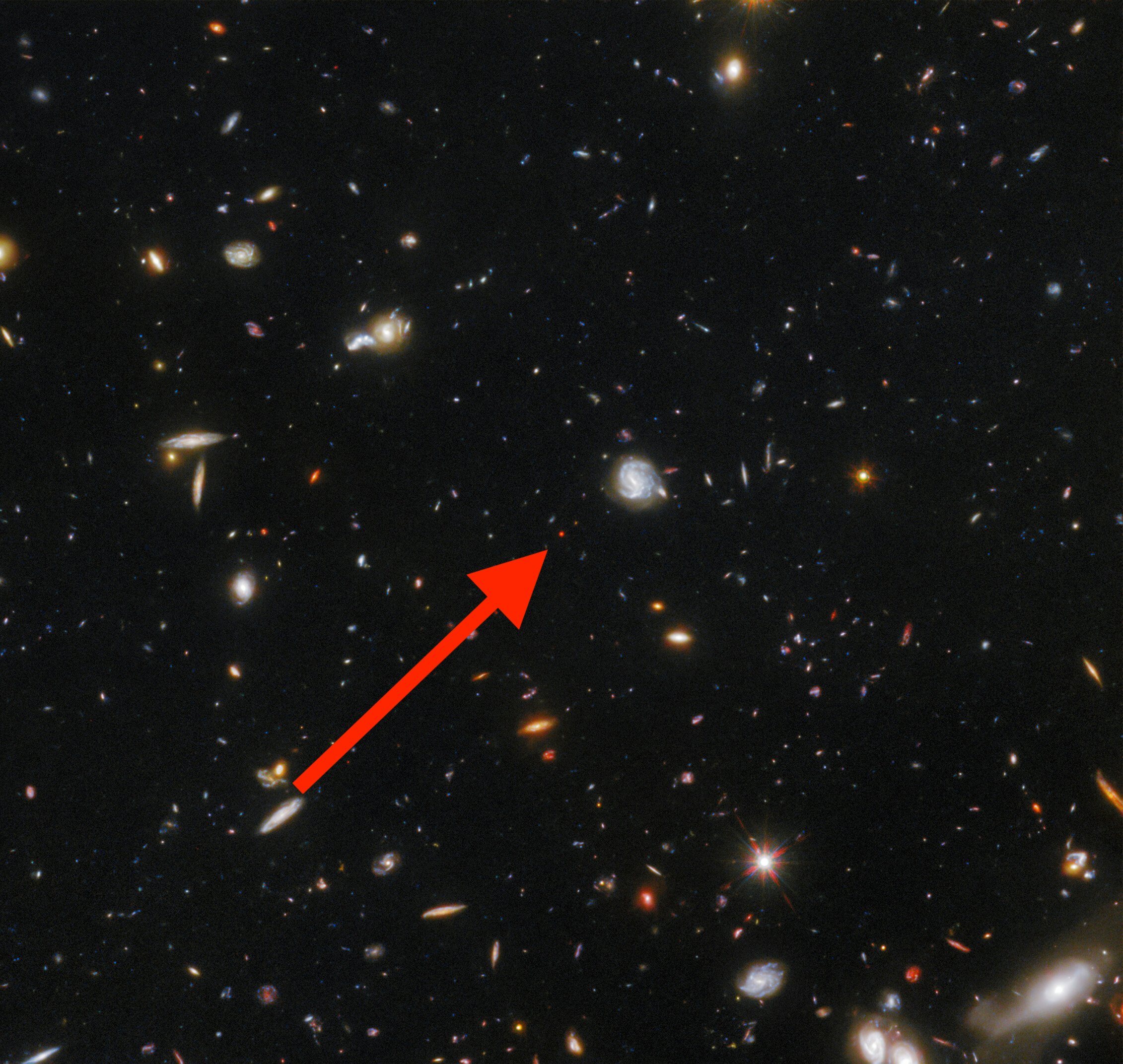
Hubble has captured what astronomers believe is a long-theorized but never detected object: a supermassive black hole precursor.
This isn’t the type of black hole forged in a supernova. Instead, it’s a sort of proto-supermassive black hole on its way to taking command of its home galaxy, offering astronomers key insight into the early universe, galaxy formation, and much, much more.
The object, called GNz7q, is believed to be from just 750 million years after the Big Bang. It’s the second distant object reported in recent weeks, after a candidate galaxy was announced last week from just 300 million years after the Big Bang. These types of objects are key to understanding the early universe and an era known as the Epoch of Reionization, when the first galaxies lit up the universe and cleared it of a sort of thick universal haze by ionizing neutral hydrogen.
The observations in ultraviolet and infrared match exactly with what astronomers believe one of these objects might look like, though there are other plausible explanations.
Objects like GNz7q were crucial to this era. The theoretical predictions go something like this: So-called “starburst” galaxies act exactly like the name implies, producing bright and brilliant stars at a rapid rate while a black hole at the center begins to swallow dust.
But after a time, the supermassive black hole has grown enough to start pushing out hot gas, clearing out its surrounding environment, and appearing as extremely luminous objects called quasars — cores of galaxies rapidly accreting matter fast enough to become bright in most light spectra, including X-ray and visible.
“GNz7q provides a direct connection between these two rare populations and provides a new avenue towards understanding the rapid growth of supermassive black holes in the early days of the Universe,” Seiji Fujimoto, an astronomer at the Niels Bohr Institute of the University of Copenhagen in Denmark, said in a press statement. “Our discovery is a precursor of the supermassive black holes we observe at later epochs.”

While this may be the first of this type of transitional object discovered, the James Webb Space Telescope may be able to find many more, especially as it’s attuned to the kinds of heat signatures an object like this might give off. That, in turn, could give us crucial insight into galaxy formation in the early universe, as well as the true origin of supermassive black holes that reside in the center of most galaxies.







